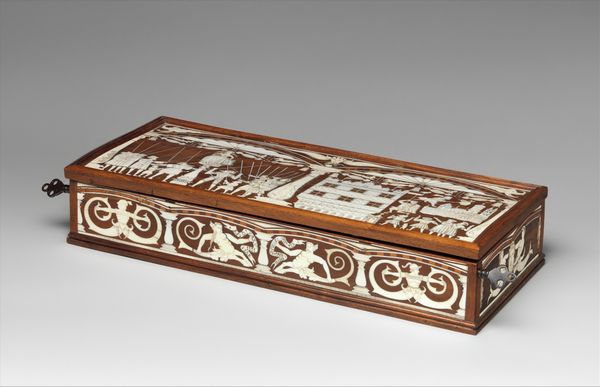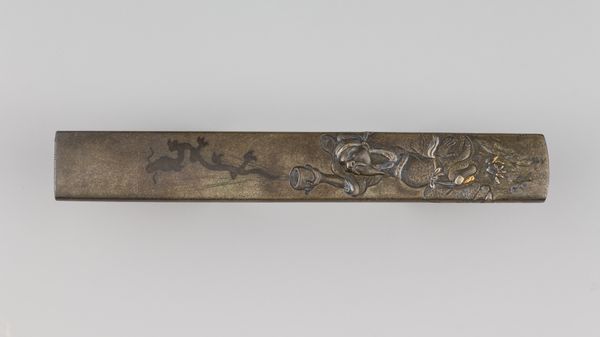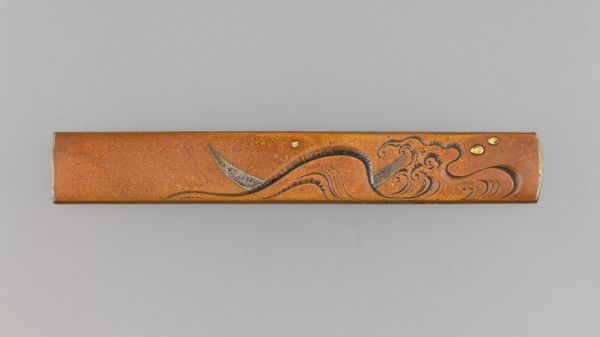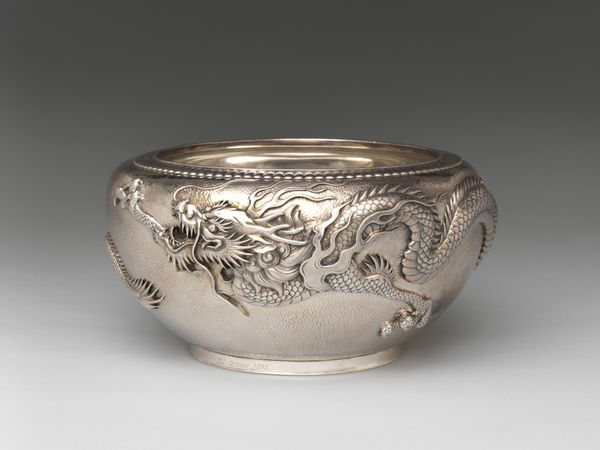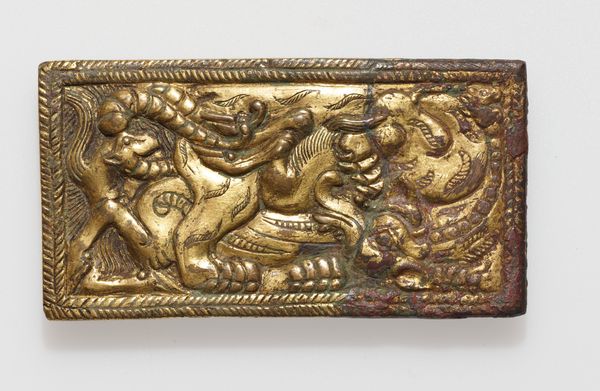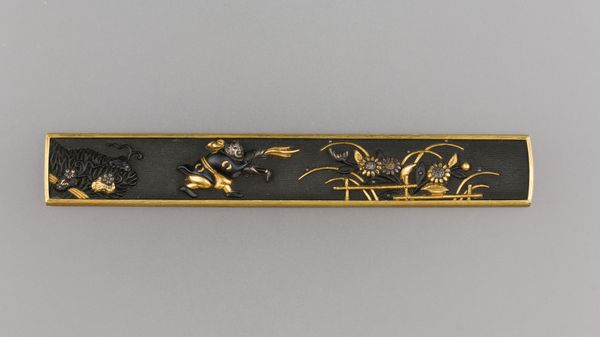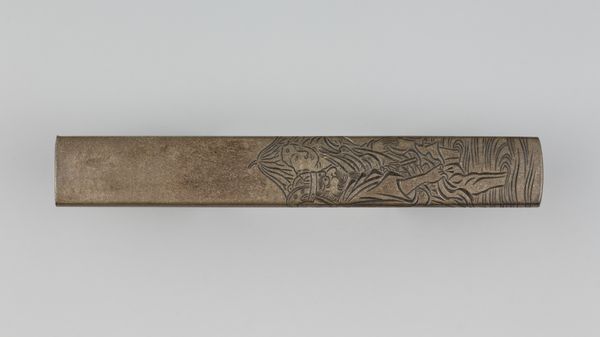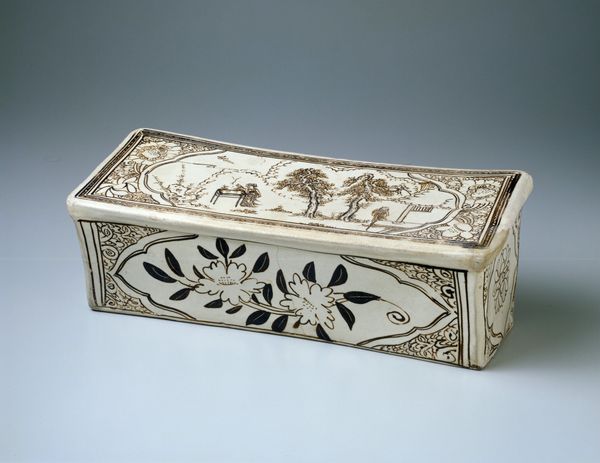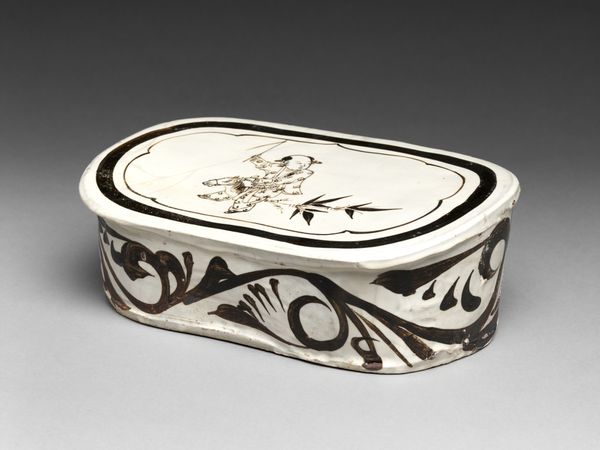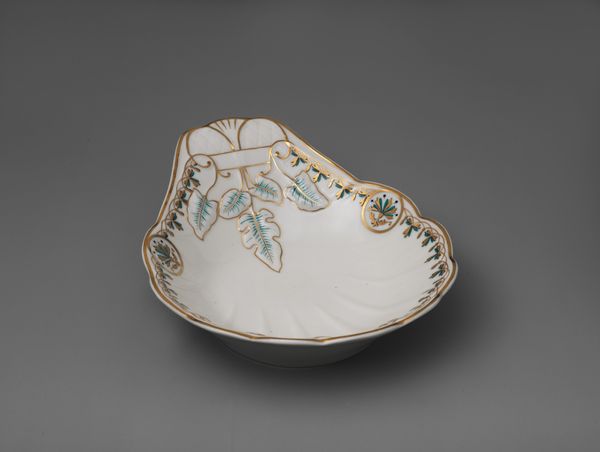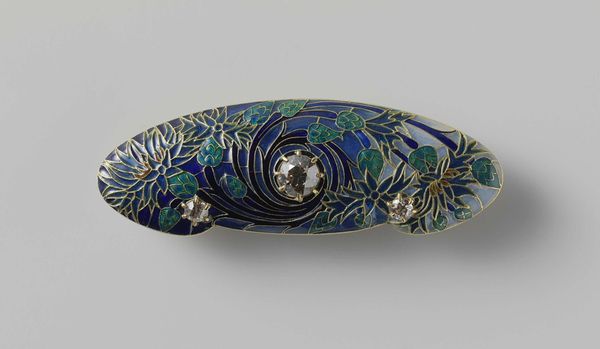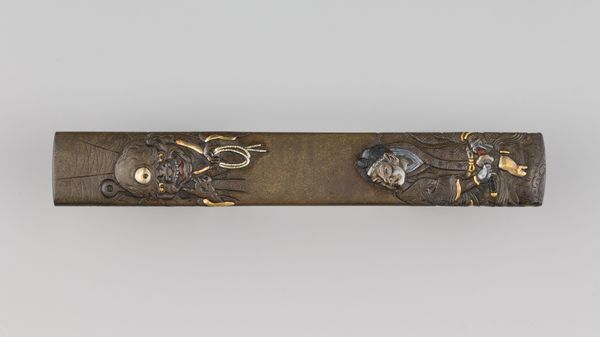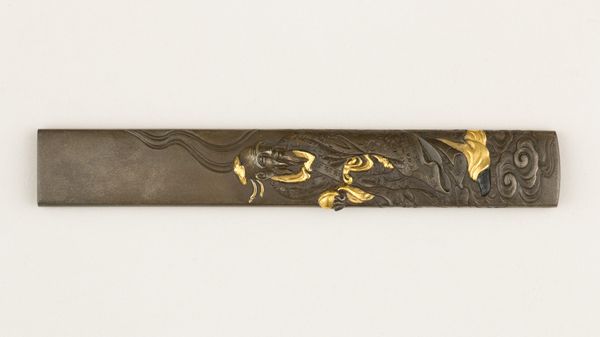
Pillow with landscapes featuring Daoist figures and a tiger 13th - 14th century
0:00
0:00
ceramic
#
medieval
#
animal
#
human-figures
#
asian-art
#
landscape
#
ceramic
#
stoneware
#
china
Dimensions: H. 6 1/4 in. (15.9 cm); W. 7 3/8 in. (18.7 cm); L. 17 1/8 in. (43.5 cm)
Copyright: Public Domain
Editor: Here we have a stoneware pillow made by the Zhang family workshop sometime in the 13th or 14th century. It features landscapes with Daoist figures and a tiger, all rendered in monochrome. It’s surprisingly… unsettling. What strikes you when you look at this object? Curator: Immediately, I think about the duality present. This pillow was created during a period of social and political upheaval in China. Considering that, how do we interpret the choice of Daoist figures and a tiger – symbols often associated with power and protection – during such uncertain times? Were these images meant to offer solace, project power, or perhaps critique the very structures of authority? Editor: So the choice of imagery may be a direct comment on the state of affairs? Curator: Precisely. And further, consider the social implications of a ceramic pillow. Who had access to such a luxury? What does it signify about the societal structures and power dynamics of the time? We must remember that depictions of animals often intersected with class status. Did the inclusion of a tiger reinforce existing hierarchies or subvert them? What might the imagery mean to marginalized communities? Editor: I hadn't thought about it in terms of class. Does the tiger hold specific meaning, perhaps linked to ideas about masculinity, or even fear, that can inform our understanding? Curator: Absolutely. The tiger can represent conflicting notions of dominance and vulnerability, courage and aggression, all central to performing masculinity in this period. Its inclusion challenges us to consider how the artisan navigated socio-political expectations. The ceramic pillow as a whole embodies an intersection of art, gender, and social status. Editor: Looking at it that way, it really opens up so many questions. Thanks, I feel I see it much more clearly now! Curator: My pleasure! It reminds us of art's ongoing engagement with social issues.
Comments
No comments
Be the first to comment and join the conversation on the ultimate creative platform.
